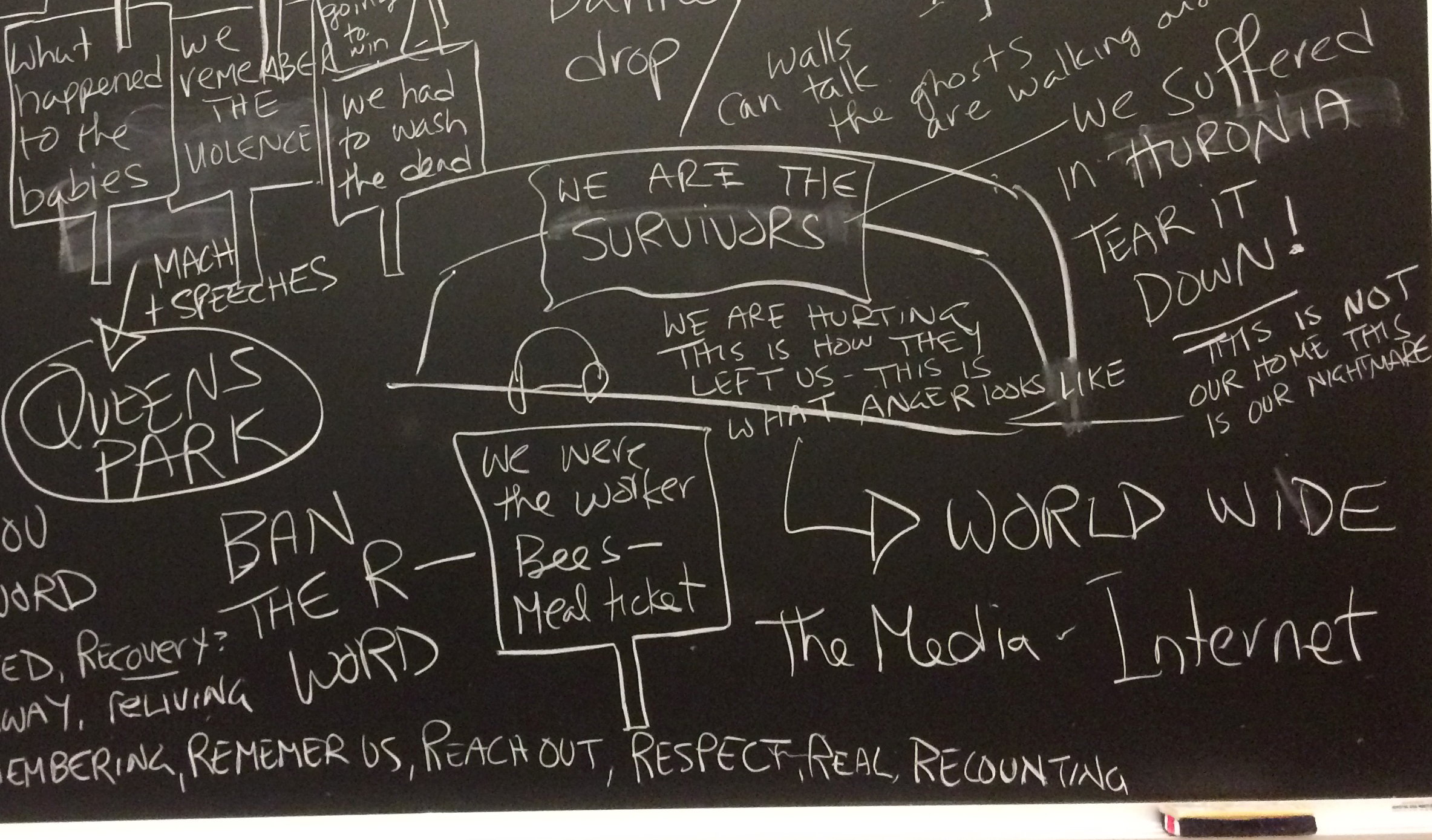Unheard Voices: Sisters Share about Institutionalization
DOI :
https://doi.org/10.15353/cjds.v6i3.367Mots-clés :
Institutionalization, siblings, family, loss, fragmentation, advocacyRésumé
The recent emergence of institutional survivors’ accounts of mistreatment and abuse in Ontario’s institutions for the “feebleminded” offers a window into Canada’s long history of segregation, mistreatment, and neglect of people labelled intellectually disabled. The breaking of this silence has also allowed the stories of others who were deeply affected by institutionalization to come forward. Narratives from siblings of institutionalized individuals, although not first-hand accounts of the life inside institutional walls, offer much needed perspective on the extensive and ongoing effect of institutionalization in the lives of thousands of families, and offer additional insight from another marginalized group that until now has not held a place in Canada’s visible and spoken history.
This paper is a weaving together of three sibling narratives that were part of a panel at the Canadian Disability Studies Association (CDSA) conference in Ottawa, Ontario in June 2015. All sisters of institutionalized persons, the three contributors remark in particular on their profound experiences of loss after their brother or sister was sent away from the family home. The contributors believe that it is through the sharing of such experiences that society can better come to understand the devastation wreaked upon both individuals and families through misinformed and prejudicial policies over a period of more than 150 years.
Références
Berton, P. (2013, September 20).Huronia: Pierre Berton warned us 50 years ago. The Toronto
Star. Retrieved from https://www.thestar.com/news/insight/2013/09/20/huronia_pierre_berton_warned_us_5 0_years_ago.html.
Dolmage, M. (2015, June 2). Missing Robert: Inspiration for Advocacy and Citizen Action. Presented at the Canadian Disability Studies Association 12th Annual Conference, Ottawa, ON.
Freeman, V. Welcome: A Memoir. Book manuscript currently under review for publication. Freeman, V. (2015, June 2). Haunted: My Experience of My Sister’s Institutionalization.
Presented at the Canadian Disability Studies Association 12th Annual Conference,
Ottawa, ON.
Malacrida, C. (2015). A Special Hell: Institutional Life in Alberta’s Eugenic Years. Toronto:
University of Toronto Press.
McLaren, A. (1990). Our Own Master Race: Eugenics in Canada, 1885-1945. Toronto:
McLelland & Stewart.
Orrick, C. (2015, June 2). Valuing Gerry: Lessons from my Brother. Presented at the Canadian
Disability Studies Association 12th Annual Conference, Ottawa, ON.
Radford, J. (1991). Sterilization versus segregation: Control of the ‘feebleminded’, 1900-1938.
Social Science in Medicine, 33(4), 449-458.
Radford, J., & Park, D. (1993). “A convenient means of riddance”: Institutionalization of people
diagnosed “mentally deficient” in Ontario, 1876-1934. Health and Canadian Society 1(2), 369-392.
Simmons, H. (1982). From Asylum to Welfare. Downsview: National Institute on Mental Retardation.
Williston, W. (1971). Present Arrangements for the Care and Supervision of Mentally Retarded Persons in Ontario. Toronto: The Queen’s Press.
Téléchargements
Publié-e
Comment citer
Numéro
Rubrique
Licence
There are no article processing or submission charges for CJDS authors.
Author(s) are not required to assign their copyright in and to their article to the Canadian Journal of Disability Studies. Instead, The CJDS asks for one-time rights to print this original work.
All articles in the journal are assigned a Creative Commons Attribution-NonCommercial-NoDerivatives 4.0 International (CC BY-NC-ND 4.0) license.

Authors are asked to contact the journal Editor if they wish to post the article on any website; translate or authorize a translation of the article; copy or otherwise reproduce the article, in any format, beyond what is permitted under Canadian copyright law, or authorize others to do so; copy or otherwise reproduce portions of the article, including tables and figures, beyond what is permitted under Canadian copyright law, or authorize others to do so.
Contacting the Editor will simply allow us to track the use and distribution of your article. We encourage use for non-commercial, educational purposes.
Authors must provide proof of permission clearance prior to the publication of their work if they are including images or other materials that are not their own. Keep in mind that such clearance can at times be costly, and often takes time. The journal editor can often work with you to seek permissions if you need information, advice or assistance.


